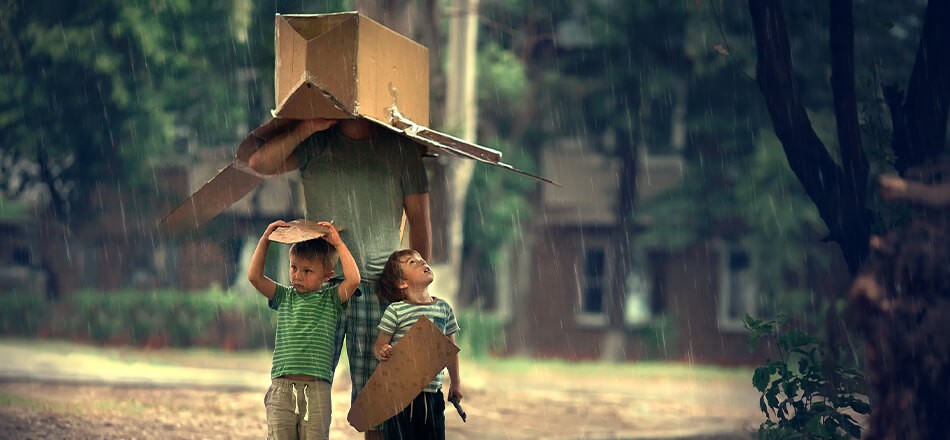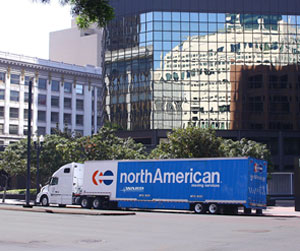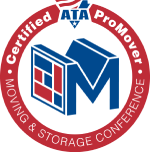
Summer is finally here and with the arrival of sunny skies and park picnics also comes the arrival of those thunderstorms we hate to love. While these storms are soothing when you’re curled up on the couch, it’s an entirely different matter when it’s moving day. The rainy season in areas like San Antonio and Houston can be unpredictable and might leave you having to deal with moving day rain.
You probably won’t be able to change your moving date, but bad weather doesn’t have to mean a bad move. These tips for moving in bad weather will help you protect your items and stay dry.
1. Wrap it up
People will often use moving blankets to cover boxes and furniture, but these blankets aren’t waterproof, they’re not even water resistant. Instead of using blankets, wrap your items in plastic moving wrap or stretch wrap to protect them against the rain. If you don’t have wrap, you can also use garbage bags or tarps for bigger items – but be sure to secure these with tape to avoid moisture from getting inside. However, if your boxes will only be exposed to the rain while being carried to the moving truck, they’ll probably be fine.
2. Line boxes from the inside
This may be hard to do if everything is already packed up, but if the forecast shows a chance of rain on moving day, consider lining your boxes. You can use garbage bags to line the inside, then simply pack all your items in the bag and, when done, seal the bag and then seal the box. This way, even if the boxes do get wet, your stuff will stay dry on the inside. There’s also the option of just moving your stuff in garbage bags, but this is generally only good for clothes and other items that won’t break.
3. Have a loading and unloading strategy
Decrease the amount of time that your moving boxes and furniture is exposed to the rain by having a clear plan for how you will load and arrange the moving truck. Generally, it’s best to place the heavy, large items at the back of the truck where the driver’s cabin is. Load the small and light items last to fill out the middle and front of the truck by the entrance. Planning these things ahead of time will streamline loading the truck and also avoid having to figure it out on the day.
4. Avoid making a mess in your old home
Regardless of whether you rent or own, the last thing you want is trails of muddy footprints in and out of your old home. Avoid this by having all your packed items ready in the front hall or garage so that it’s close to the truck but still dry. This will help to keep as much of the rain as possible out of your old home so you don’t have to do too much cleaning afterward.
5. Reinforce your boxes
Cardboard boxes aren’t the most reliable at the best of times and it gets worse when they’re wet. Use new cardboard boxes that are in good shape or, if possible, rent plastic moving boxes. Inspect your boxes and use tape to reinforce weak areas like rips and tears. While you’re at it, you might as well wrap an extra layer of plastic wrap around these boxes to ensure they stay dry.
6. Line the truck bed
Don’t just focus on exposure to the rain while carrying items to the truck, you should also pay attention to the potential puddles that may form when your things are inside the truck. To prevent this from creating a mess, line the truck bed with flat cardboard boxes to soak up any drops that may land. You can also protect fragile items or even groups of items by wrapping them in tarps. This will also protect these items against damage while in transit.
7. Wipe items off while loading
To prevent any puddles forming, keep a few towels inside the truck and wipe down items as soon as they’re placed in the truck. While you won’t really get much moisture off the boxes, this is primarily to avoid stains and moisture damage on furniture. Pay extra attention to wood furniture, as these items can easily stain, so it’s best advised to keep them as dry and secured as possible.
8. Be practical about safety
In addition to taking care of your furniture and moving boxes, rain on moving day also poses a threat to your own safety. So if you’re moving in the rain, take extra precautions to avoid accidents like slipping while carrying a heavy item. This can be avoided by placing tarps, unfolded cardboard, or old mats along the path you have to take from the house to the truck. You can also streamline this by having people in designated areas, such as two persons who have to move items from inside the house to the door, and two to get those items into the truck. This way there will be less traipsing of rain into the house.
9. Work efficiently
There are certain things in life you can enjoy doing slowly, but this isn’t one of them. The sooner you get your items into the moving van, the less time they’re exposed to rain, the sooner you’re settled into your new home. Don’t sacrifice safety for speed, but do things efficiently and don’t cave into feelings of nostalgia or wanting to play around. If you do prefer to take your time with the move, check the forecast to see if it’s possible to wait until the rain has passed.
10. Unpack straight away
Unpacking is the last thing you want to do after a day of moving, but you’ll thank yourself once you’re settled into your new home and all your things are dry and undamaged. People generally take longer to unpack than to pack, even after returning from vacation. However, if it rained on moving day, you don’t have the luxury of delaying packing and living among stacks of boxes. It is crucial to unpack your belongings soon, to catch any moisture that may have seeped into your belongings and prevent any damage before it’s too late.
It’s always better to move on a sunny day if it’s possible, especially if you believe moving superstitions. However, the best advice for moving in the rain is to let the professionals take care of it for you. With 40 years of experience, Ward North American knows how to move in all circumstances. We pay attention to all the details so you don’t have to. If you want a stress-free move, request a quote now.





